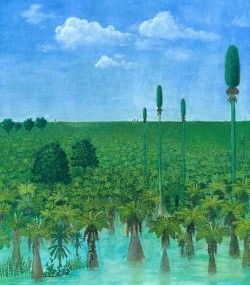Researchers Discover 300 Million Year Old Tropical Forest Buried In Ash

A team of researchers from the University of Pennsylvania have uncovered a 300-million-year-old tropical forest that was previously buried under ash.
The scientists say the forest was buried when a volcano in northern China exploded, just like the city of Pompeii. The forest was discovered near Wuda, in China.
The team, led by Hermann Pfefferkorn, examined 1,000 sq meters of the ash layer in three different sites located near Wuda. They found the ash layer dated back to a geologic period called the Permian, during which Earth's continental plates were still moving toward each other to form the supercontinent Panagea.
Researchers also discovered six groups of trees... three trees are already extinct.
According to the researchers, the study site is unique as it provides a snapshot of a moment in time. Since the ash covered a large expanse of forest in the matter of only a few days, the plants were preserved as they fell and, in many cases, in the exact locations where they grew. It is hoped that the reconstruction of this forest will provide more information about the ecology and climate of the time.
"It's like Pompeii: Pompeii gives us deep insight into Roman culture, but it doesn't say anything about Roman history in and of itself," said Hermann Pfefferkorn from the University of Pennsylvania. "But on the other hand, it elucidates the time before and the time after. This finding is similar. It's a time capsule and therefore it allows us now to interpret what happened before or after much better,' he added.
© Copyright IBTimes 2025. All rights reserved.





















